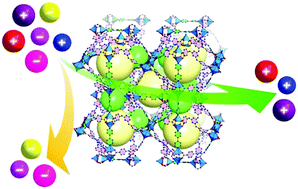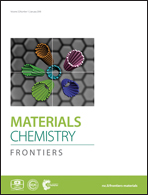Secondary-amine-functionalized isoreticular metal–organic frameworks for controllable and selective dye capture†
Abstract
By adding 4,4′-bipyridine (BPY) to cross-link the paddle-wheel clusters M2(–COO)4L2, isoreticular metal–organic frameworks (MOFs) have been constructed from a flexible tritopic linker, 4,4′,4′′-s-triazine-1,3,5-triyltri-p-aminobenzoic acid (H3TATAB), termed as ST-14 [Cu6(TATAB)4(BPY)3] and ST-15 [Zn6(TATAB)4(BPY)3]. With a secondary-amine group, these MOFs have shown exculsive cationic dye capture properties with charge selectivity, metal-dependent adsorption kinetics, and solvent-dependent dye release. This work sheds light on further designing smart porous materials for drug delivery, molecular inclusion, sensing and so on.

- This article is part of the themed collection: 2017 Emerging Investigators by MCF


 Please wait while we load your content...
Please wait while we load your content...